by Carol A Westbrook
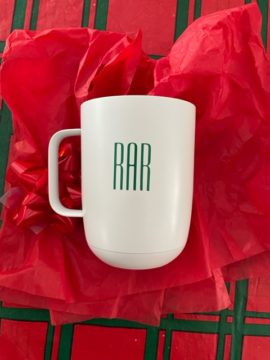
I gave my husband an Ember mug for Christmas. The Ember mug is artfully crafted, with its embossed monogram and satiny, comfortable finish. The magic of this mug is not its beauty, but the fact that it holds coffee or tea at a constant, pre-set temperature for over 2 hours. It’s great for someone who likes to linger over that second cup of coffee and carry it around the house.
My husband likes his coffee hot, so I set the mug’s holding temperature to 140°. While I was at it, I changed the color of the LED indicator light, just to see if I could. For this I used a cell phone app. I checked my phone to make sure that coffee pot was set to brew at 6 am, and that the house thermostat was set to increase the house temperature at 5:30 am from the low 60’s to the low 70’s, so we’ll be warm and toasty when we awake. And of course, the bread machine would have been busy since 4:00 am, making the breakfast bread. For dinner, I decided I will put a few things in the crockpot and program it to start cooking at 4 pm. I began to realize how our smartphones control so many things in our life; the Ember mug was just one more addition to our “Internet of Things,” or IOT.
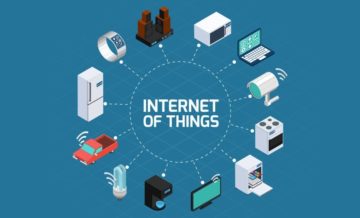 The “IOT” is a new term which describes objects that are embedded with sensors, processing ability, software, and other technologies that connect and exchange data with other devices and systems over the internet. The IOT includes much more than kitchen appliances. My smart doorbell lets me see visitors to my house on my phone from anywhere in the world (including those who don’t ring the bell). I can see the driveway in our second home to tell if it needs a snowplow. I can control the sprinkler system in our garden, I can fly my drone, I can charge my electric vehicle, and the list keeps growing. It’s a long list, but communicating with the IOT is only one of many uses of a smartphone.
The “IOT” is a new term which describes objects that are embedded with sensors, processing ability, software, and other technologies that connect and exchange data with other devices and systems over the internet. The IOT includes much more than kitchen appliances. My smart doorbell lets me see visitors to my house on my phone from anywhere in the world (including those who don’t ring the bell). I can see the driveway in our second home to tell if it needs a snowplow. I can control the sprinkler system in our garden, I can fly my drone, I can charge my electric vehicle, and the list keeps growing. It’s a long list, but communicating with the IOT is only one of many uses of a smartphone.
For sure, many of the smartphone’s functions can be done with a laptop or a phone call, and some functions are frivolously unnecessary—like setting the LED color on the Ember mug. But these functions may be easier and more convenient to do with a smartphone, or avoid entirely the need to speak to a person. Functions such as ordering goods online, making a doctor’s appointment, or checking a bank account balance. Other activities can be done only with a smartphone. For example, taking a photo and posting it to Instagram, or texting it directly to a friend; or verifying identify with 2-factor authentication when managing a stock portfolio. I can use the map and GPS function, or ask Siri to call the direction-finding app Waze, if I’m headed somewhere. That somewhere might be a restaurant, which Siri (or Alexa) booked for dinner; or a play, for which Alexa booked tickets. There is so much our smartphone can do in this new, digital world!
We left the analog world and became digital fifteen years ago, on January 9, 2007. That was the day when the late Steve Jobs gave the keynote talk at the Mac World convention. At the talk he announced three new products: to quote “a revolutionary iPod with touch controls, a revolutionary 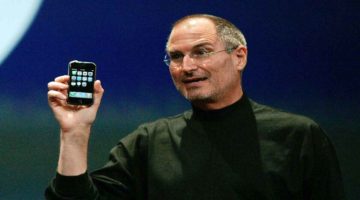 mobile phone and a breakthrough internet communication device”, that were combined all in one product—the Apple iPhone. The world had never heard of anything like this before. I remember watching his speech. I was a big fan of Apple at the time (and I still am). If you watch the presentation (streamed here) you may be struck by Job’s excitement and charisma. He felt he was truly introducing a revolutionary product. And so it proved to be. It was no coincidence that this MacWorld convention coincided with the Consumer Electronics Exhibition, which showed off many of the products that the iPhone would render useless.
mobile phone and a breakthrough internet communication device”, that were combined all in one product—the Apple iPhone. The world had never heard of anything like this before. I remember watching his speech. I was a big fan of Apple at the time (and I still am). If you watch the presentation (streamed here) you may be struck by Job’s excitement and charisma. He felt he was truly introducing a revolutionary product. And so it proved to be. It was no coincidence that this MacWorld convention coincided with the Consumer Electronics Exhibition, which showed off many of the products that the iPhone would render useless.
Creating the iPhone required bringing together many technologies that were already in use, some created by Apple for other purposes, and some specifically for the iPhone. The genius of Steve Jobs, Apple Computer’s CEO, and his team, was to combine them into one small, hand-held device that included the functions of numerous other devices that were cluttering up your purse, pocket or briefcase. These technologies included packet transmissions for texting and email; wi-fi connectivity which enabled an internet browser as well as email; an Mp3 reader with capabilities to store and organize music; a camera and video recorder. And of course, telephone capability. Whereas other smartphones that were in existence at the time, like the Blackberry, had a hard case which included an integral, fixed keyboard, Apple’s iPhone used the touch screen to configure a keyboard that was present only when it was needed. The touch screen also meant that the iPhone could easily be converted into other applications, such as a Facetime screen, an MP3 player, a movie screen, a text writer and an email reader. Later, artificial intelligence was incorporated into the smartphone, allowing it to search the internet or access the IOT merely by voice command.
One of the most important inventions that enabled the first iPhone was the glass screen cover. The original prototype of the iPhone used a plastic screen that soon scratched. Six weeks before it was to go into production, the scratches so annoyed Jobs that he demanded the screen be made of glass. The invention of this glass is a story in itself, as it required collaboration with a Chinese factory and 8,700 mid-level Chinese engineers, using Corning glass, to develop a thin bendable glass in time for production!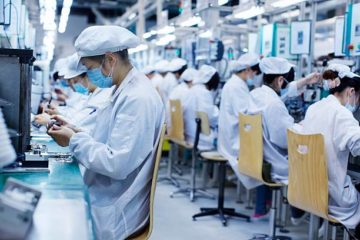
The introduction of the iPhone was like an asteroid striking the earth, leading to the extinction of many things that, until now, had become a necessary part of our lives. Think about it. When was the last time you used a Blackberry, a Palm Pilot (or other address book), a stylus-based hand- held instrument, a car phone, a flip phone, a landline, a fax machine, a desktop computer, a vinyl record system, a DVD player, a CD, or a DVD, a CD player, or a Walkman—if you even know what these are? Also in decline are telephone landlines and fax machines, while digital cameras are used but the images are often directly downloaded to the iPhone. Film cameras are the reserve of hobbyists or specialists. The smartphone combined all of these functions into one small handheld device that quickly insinuated itself into our lives. It brought us into a digital, screen-based world, which was as baffling to us boomers as it was natural to Millennials.
held instrument, a car phone, a flip phone, a landline, a fax machine, a desktop computer, a vinyl record system, a DVD player, a CD, or a DVD, a CD player, or a Walkman—if you even know what these are? Also in decline are telephone landlines and fax machines, while digital cameras are used but the images are often directly downloaded to the iPhone. Film cameras are the reserve of hobbyists or specialists. The smartphone combined all of these functions into one small handheld device that quickly insinuated itself into our lives. It brought us into a digital, screen-based world, which was as baffling to us boomers as it was natural to Millennials.
This digital, smartphone-based world is second nature to half of the people in the US. But the other half of the population, the half born before 1983 (including myself), grew up in an analog world. We used phones with dials, and had land lines. Imagine the time when you had to find a phone booth or sit at your desk to call your mother. 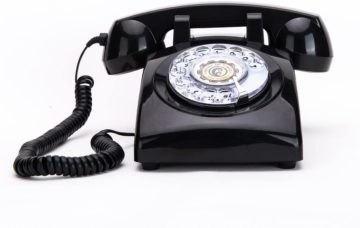 My phone could text and snap photos, but there was no Instagram to post them to. Video calls existed only in sci-fi books. Long distance calls were prohibitively expensive, including calls to nearby suburbs. We didn’t have face time or video calling. Letters had to suffice.
My phone could text and snap photos, but there was no Instagram to post them to. Video calls existed only in sci-fi books. Long distance calls were prohibitively expensive, including calls to nearby suburbs. We didn’t have face time or video calling. Letters had to suffice.
Before the world was digital, we used fax machines for business. We watched TV together, on channels, and we had no control over the day and time our favorite show was broadcast—that was up to the network. But at least TV was on the air, for free. Our desktop computers were plugged into the internet, which we could surf, and print out maps with driving directions. My music was a CD collection, later ripped to my computer, but there was no Spotify on our phones. Movies were in theaters, or were rented or purchased as videos, later as DVDs. Today even our DVD collections are obsolete, as we watch movies on Netflix or other providers.
In analog days, we shared our music with our friends, in our dorm rooms, at parties or just hanging out. 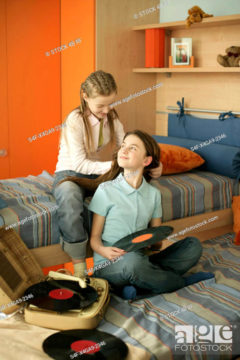 We heard the latest hits on radio, and rushed out to buy the CD. When digital music and MP3 players appeared, listening to music became a private affair, each of us with our own favorites. Today we can search YouTube to find new performers every day, and download their songs or just listen to them using our Spotify subscription without having to buy the song. Of course, many of us boomers cannot bear to get rid of our CD’s, and painstakingly ripped each one into our MP3 music collection, to listen to by ourselves (but that’s another story.) We could keep the music, but not the togetherness that music and network TV brought us. Those days are gone forever.
We heard the latest hits on radio, and rushed out to buy the CD. When digital music and MP3 players appeared, listening to music became a private affair, each of us with our own favorites. Today we can search YouTube to find new performers every day, and download their songs or just listen to them using our Spotify subscription without having to buy the song. Of course, many of us boomers cannot bear to get rid of our CD’s, and painstakingly ripped each one into our MP3 music collection, to listen to by ourselves (but that’s another story.) We could keep the music, but not the togetherness that music and network TV brought us. Those days are gone forever.
True, I sound like an old geezer remembering whalebone corsets and

horseless carriages. But it was only 15 years ago when we lived in this analog world. It has changed so quickly.
It’s hard to imagine how this digital world will look in the future, but we can be sure that it will be just as different to the Millennials as theirs seems alien to us. Will our smartphones be contained in small chips embedded in our skin, so we don’t have to carry them around with us everywhere? Such chips already exist, albeit with limited capabilities. And perhaps we’ll have screens in contact lenses or glasses, and type using a wave of the hand, or by talking to our AI assistant—who might also appear in our vision in 3-D! Will we be able to shop, visit with friends, see a doctor, or vacation in exotic places without having to leave the comfort of our home? Theoretically we could live our entire lives online, grow up with friends, go to school, get our  college degrees and get a job—all online. At times we may leave home, once to meet and marry the person we courted through a dating app, and again we leave our home for the hospital for labor and delivery. This is a frightening future to me.
college degrees and get a job—all online. At times we may leave home, once to meet and marry the person we courted through a dating app, and again we leave our home for the hospital for labor and delivery. This is a frightening future to me.
The Covid-19 lockdowns showed us it is possible to live a secluded life in a digital world. During the pandemic we had to create a new way of online life for work, family get-togethers, shopping, theater, school and graduations. But this experience taught us an important lesson: we can adapt to a digital life, but as humans we need in-person contact with others that we love in order to thrive. So perhaps the digital world as it exists today is as far as we want to go. Now I’ll settle back and make myself a cup of coffee to enjoy in a good old-fashioned analog crockery mug.
